Everything about asters: from varieties to growing secrets

Today, flower growers around the world grow a huge number of different flowering crops. Among the available variety, asters are distinguished in a separate category, represented by a large number of species and varieties, notable for their decorativeness when planting alone or in composition in flower beds with other horticultural crops.

General characteristics
China is considered to be the homeland of these flowers. In Europe, they began to be cultivated in the VIII century, when the planting material was brought in for subsequent distribution. After the plant began to grow everywhere, the botanist K. Linnaeus gave the flower the name - aster, which is used to this day. The culture has a long history, was in demand not only due to its high decorative appeal, but also acted as a talisman and a symbol of beauty.
Today, aster is represented by annual and perennial rhizome grasses from the family of the same name Astrovye or Compositae. In the genus of this culture, there are about two hundred species, the varietal assortment is distinguished by more impressive quantitative values.

The plant develops in the form of a bush with simple leaves, its height can vary from 10 to 150 centimeters. Aster inflorescences are multi-colored baskets consisting of petals of different sizes, their shape is elongated, reminiscent of a tongue. In the center, the petals will be short, in contrast to those located at the edges, in the predominantly yellow color. As for the extreme petals, their color palette is distinguished by a large variety, so in the garden you can find aster bushes of red, pink, purple, raspberry and even green. The vast majority of varieties are represented in the garden by terry inflorescences.
Herbaceous plants for open ground are notable for a well-developed root system, which is capable of developing, deepening into the soil by 20-30 centimeters. In addition to the impressive size of the roots, asters are notable for the resistance of root branches to mechanical damage, as well as the ability to recover extremely quickly. This nuance eliminates the risk of crop death during careless transplantation or other manipulations with the plant.
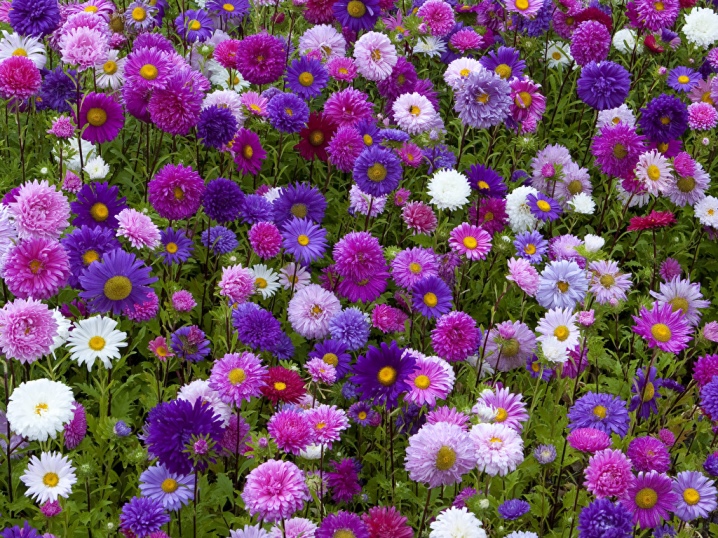
The stem of the flowers is erect, strong. There is a thick green pile on it. As a rule, its height varies between 50-80 centimeters. But today, gardeners and florists grow species and varieties in which the stem height can be 15 or 30 centimeters.
The leaves of the culture are arranged in a certain alternation in size. The stems will be smaller and elongated, with the lower green mass looking slightly different as it resembles a scapula with jagged edges.
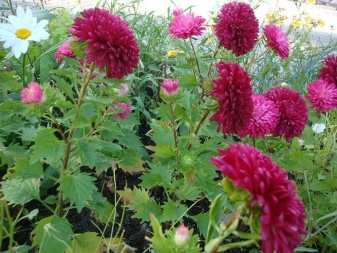

Overview of species and varieties, their shades
In light of the large number of varieties and types of asters, their classification is a complex system. There are more than 4 thousand varieties of this culture alone. For convenience, they are divided into 4 dozen variety groups. The range of flowers is regularly updated with new plants. The signs that allow grouping cultures are the following features:
- inflorescence color;
- plant size;
- the shape of the petals;
- flowering period, etc.



Also, among the available variety, it is possible to distinguish perennial and annual types of asters. The first group includes crops of different sizes and colors, which have found their application in landscape design and in the design of gardens and flower beds in private territory. The second group contains about 600 species. Crops can have double or simple baskets, different heights and colors of inflorescences.

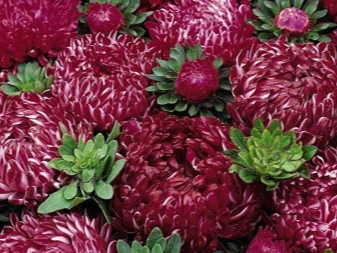
Among the most popular species and varieties in gardening, the following are worth highlighting.
Alpine
The second name of the plant is Korzhinsky's aster. The culture can grow in size up to 20-30 centimeters, the root system is branched, located horizontally in the ground, and has a large number of shoots. The flowering period occurs in the last weeks of May and lasts for a month. The diameter of the flower varies between 4-6 centimeters. Only one flower develops on one peduncle. Representatives of this species have an external resemblance to chamomiles. The culture is represented by asters of different colors and shades. In addition to its visual appeal, a plant of this type stands out for its good frost resistance. Popular varieties of Alpine asters include:
- Albrus - a bush with a height of about 20 centimeters, blooms with white flowers in the middle of summer;
- "Gloria" - a beautiful culture with small blue flowers;
- "Goliath" - aster with purple flowers, which blooms in the middle of summer;
- "Happy end" - an early variety with straight and strong peduncles on which pink flowers develop.



Aster new belgian
A culture bred in North America. Its second name is Virginia aster. The bush can grow in the range of 0.5 to 1.5 meters. The culture stands out for its rapid growth rates, the root system in creeping plants. Aster blooms with paniculate inflorescences, of which a large number develops on the plant. Most of the varieties have a lilac color of the inflorescences, however, hybrid forms of other shades are also grown today. The diameter of the inflorescences is 2-4 centimeters.

Aster refers to crops that enter the flowering phase in the fall. The plant will delight gardeners with its beautiful appearance before the arrival of the first frost. Among the representatives of this species are also flowers that will bloom in summer. In general, all representatives of the species are distinguished by their high resistance to negative temperatures, therefore, in the open field, they do not require additional shelter for the winter. Among the popular varieties stand out:
- Mont Blanc - a variety with white flowers, which blooms in autumn, the plant height is about 130 centimeters;
- "Amethyst" - flowering occurs at the end of summer and continues until late autumn, while the color of the flowers will be purple;
- "Marie Ballard" - a plant with a large number of pink inflorescences, growing up to one meter.



Aster heather
The plant is about one meter high. Aster blooms with small flowers, abundantly decorating the culture for a couple of months. The color of the inflorescences will be white, pink or blue. Flowering begins in September. The culture is notable for its drought resistance, as well as frost resistance. Shoots develop with a slope towards the ground. The culture is considered a ground cover. Popular varieties:
- "Lady in Black" - beautiful aster blooming in white, pink and brown colors;
- "Blue Star" - a creeping perennial, distinguished by blue shades of flowering.


Peony
This is the name of the culture because of the similarity of the inflorescences with another regular in the gardens - the peony. The petals of these asters can be of different sizes. As a rule, those located on the inside will be shorter, their edges are bent inward. The plant grows in size up to 70 centimeters, has strong shoots. Aster enters the flowering phase at the end of summer. Varieties:
- "Silver Tower" - a variety whose petals are blue in color with a diameter of about 10 centimeters;
- "Red Tower" - a small plant with crimson terry inflorescences, which is used for making bouquets;
- "Duchess" - a variety that looks very attractive due to the lush double flowers of deep pink color;
- "Annushka" - carmine aster, flowering in August.



Italian
A flower whose height varies from 30 to 60 centimeters. The bush develops in the form of a hemisphere. European aster is the second name of the species, which is common among gardeners. In the wild, the plant is found in the Caucasus and Europe. The inflorescences do not stand out for their large size, so their diameter will be about 5 centimeters. The plant blooms in summer, the duration of this phase is 2-3 months. Aster is represented by the following varieties:
- "Kobola" - dark purple flower with inflorescences no more than 4 centimeters in diameter;
- "Herman Lena" - lilac aster with a lot of inflorescences on the bush;
- "Dwarf" - a variety that looks very impressive due to its beautiful purple inflorescences, which are often used to make bouquets.



Bush
The plant has the shape of a ball or hemisphere, rather branched. Typically, the height of the crop is within one meter. Erect shoots have abundant pubescence. The diameter of the inflorescences varies within 3-6 centimeters, in many respects this indicator depends on the place of rooting of the aster. Flowering occurs in the last months of summer and lasts about 45-50 days. Popular varieties:
- "Jenny" - a culture on which a large number of side shoots grow, the height of the aster will be 40-45 centimeters, the color of the inflorescences is red;
- "Kristina" - a small bush up to 30-40 centimeters high, blooming with pink inflorescences with a yellow center. Aster blooms in autumn.
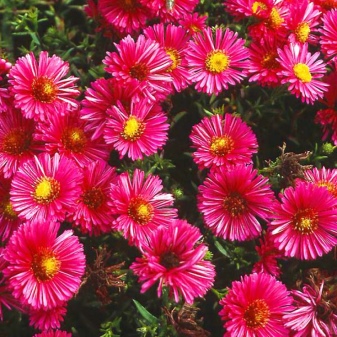

New English
Large culture, capable of reaching a height of up to 200 centimeters. The shape of the inflorescences resembles panicles, one contains about 30 baskets. The diameter of one flower does not exceed 4 centimeters. The color will depend on the variety. It is a hardy crop that is recommended for growing in regions with harsh climates. Aster is represented by varieties:
- "Gerberous" - inflorescences develop in the form of brushes, the plant blooms with pink flowers;
- "Constance" - culture with purple inflorescences and resistance to negative temperatures.


Ageratoid
The Far East is considered the homeland of this species. The aster develops branched stems at the ends, while the base will be erect. The height of the flower is within one meter. The inflorescences consist of thin petals, the length of which is only 2 mm. The color of the species can be white or light blue. It is an autumn aster that can tolerate drought well.


Star-shaped
The plant is native to the Eurasian continent, grows up to 60 centimeters. Flowers can range in color from purple to lilac, with the core usually colored yellow. Inflorescences resemble baskets or small shields. The culture blooms in summer, it is often used in folk medicine.

Large-leaved
Plants of this species grow up to one meter. The foliage of such asters can be large at the bottom with an ovoid shape, as well as lanceolate with a rough surface. The inflorescences are small, resemble baskets, with a diameter of about 3 centimeters. Shades vary in different tones of purple. Flowering is quite long - it lasts about 75 days. The culture is able to maintain viability when the thermometer marks drop to -40 degrees.

Heart-leaved
This species is represented by crops of different sizes. Therefore, incoming varieties develop up to 150 centimeters, however, there are varieties where the bushes are on average about 20 centimeters high. This is a small-flowered aster, the diameter of the inflorescences is only 2 centimeters. The color of flowers can be pink, white, blue. Flowering begins in summer and continues until the arrival of cold weather.


Siberian
Most often, this aster is grown for medical use. The plant grows in size up to half a meter, the inflorescences develop in the form of medium-sized baskets growing singly. According to the description, the meadow culture blooms with pink and purple flowers. Aster tolerates frost and drought well.


In addition to the aforementioned varieties and types of asters, undersized border flowers, aster spread wide and mountainous, saline, willow, field, varieties of Japanese selection, as well as "Milady", "Matsumoto", "Pinocchio", "Apollo", etc. are used in landscape design. etc.



We take into account the climate and choose a place
A feature of asters is the ability to develop well in partial shade, as well as in direct sunlight. However, in the first case, the flowering of the culture may not be so abundant and bright. That is why the crop is suitable for growing in any climatic zone with its own weather nuances and the level of sunlight. Aster is a crop belonging to varieties that can grow and bloom even with slight minus marks. The borderline in this regard will be a mark of -7 degrees.

As for the landing site, it is preferable to consider options with slightly acidic soil. The ideal option for asters would be loam or sandy loam soil. Having decided on the soil and illumination of the area, it is worth remembering that most of the species and varieties grow extremely poorly in areas where gladioli or tulips were previously planted, it is also worth refraining from planting asters in the ground after calendula.


On the site where the planting of asters is planned, there should be no stagnation of moisture in the ground, in addition, the level of occurrence of groundwater deserves special attention. Excess moisture, especially in the shade, can lead to decay of the root system. Under such conditions, the presence of a drainage layer in the garden is a mandatory requirement for the planting site.


The plant quickly adapts to new conditions, so it can be planted or rooted even in the flowering phase, which will be an advantage in case of initially choosing the wrong place in the garden for planting such crops.

Landing features
Despite the fact that the culture belongs to cold-resistant and unpretentious flowering plant varieties, suitable for decorating a site, there are a number of important nuances regarding the issue of their rooting.
- Before planting an aster, it is necessary to carry out a number of preparatory measures with the chosen place. First of all, it is recommended to additionally add compost or wood ash to the soil. Such components will help the plant to quickly adapt to new conditions.
- Aster can be rooted in several ways, including the seedling method. In this case, when planting, you should pay special attention to the location of the root system in the ground in order to exclude the likelihood of creases.
- Among the features of planting, it is also worth highlighting the need for preliminary loosening of the soil.


The aster planting algorithm is as follows.
- Before planting, it is necessary to make small grooves in the ground. Moisten the ground so that the liquid is well absorbed.
- If a group planting of flowering bushes is planned, then the rooting holes should be located at a distance of at least 50 centimeters from each other. Seedlings are grown by placing crops in 20-25 centimeters increments.
- After the location of the crops in the ground, a layer of soil is sprinkled on top, compacted.
- Planted asters should be watered no earlier than 3 days later. After a week, it is recommended to add fertilizing to the soil in the form of nitrogen-containing fertilizers.


Care rules
In general, agricultural technology related to caring for asters after planting does not present any particular difficulties for the gardener. To have an attractive and healthy plant in your garden, you need to do the following:
- Despite the fact that plants can grow well in the shade, for young seedlings it is worth ensuring maximum contact with the sun. This applies to species that are planted outdoors, as well as crops that are grown on a balcony or indoor windowsill.
- As practice shows, for the growth and flowering of asters, an air temperature in the range from + 18C to +25 degrees is required. This nuance is especially true for young cultures. For adult plants, there is no urgent need to comply with such temperature nuances, since healthy asters are able to bloom even with fluctuations in thermometer marks and frost.
- Often it is not recommended to water asters, since waterlogging of the earth in the place of their rooting can lead to the development of various ailments. Watering should be regular, as the soil dries up. The aster does not need spraying of the aerial part. In summer, 1 square meter will need no more than 3 buckets of water. In the fall, the frequency and volume of watering can be reduced. After each moistening, the soil should be loosened.
- Plants love fertilizers, in particular, mineral complexes. Also, gardeners can use organic matter in the form of chicken manure, diluted with water. This type of fertilizer will be relevant for soil with a low content of useful microelements. The first introduction of fertilizers is carried out after 7 days, the subsequent ones will fall on the bud-laying phases, as well as during the flowering period of asters.



Reproduction methods
There are several ways to get a new blooming culture.
Seed method
Planting material can be purchased at the store or collected in the fall after it has ripened. It is recommended to plan planting work in the spring. It is important that the air temperature at this time has already warmed up to +20, which in different climatic conditions occurs in different months. Also, seeds can be germinated at home, creating small greenhouses on the windowsill or elsewhere.

For all options, the single requirement is to deepen the collected or acquired material into the ground by no more than 1 centimeter. As a soil mixture for home germination, it is recommended to use garden soil disinfected with manganese solution, or a universal store composition.
In the garden or indoors, the seedlings are covered with glass or transparent plastic. It is important to regularly ventilate the greenhouse, moisten the seeds with water at room temperature. As a rule, shoots of young asters will appear after a week and a half. During this period, the covering material must be removed to provide the plants with good illumination. You can dive aster when the first full leaves appear. When growing at home, transplanting crops into open ground is carried out after the young plants are sufficiently strong.



Cuttings
This method allows you to collect material from the selected mother bush for planting in any summer month. The most suitable material for planting will be cuttings selected from the top of the culture. The optimal length of the cutting will be 7-9 centimeters; they are cut in cloudy weather. This must be done with a disinfected instrument.
The collected material is planted in any small container filled with sand and peat. At home, cuttings are germinated at some distance from the light. In the open field, it will be possible to get a new aster by rooting cuttings in the ground, with additional shelter in the form of a transparent material. You can use plastic containers. As a rule, after a month, the plant will already take root well in a new place.


Division of the mother plant
Similar work is carried out in the spring.The process of obtaining a new plant involves the separation of a part of the bush, which will contain from 3 to 5 shoots with a root system and buds. The resulting part is rooted in a hole in the garden, regularly moistening the soil.


Diseases and pests
Similar beautiful plant susceptible to the following diseases:
- blackleg;
- fusarium;
- rust;
- jaundice.



As a rule, it will not be possible to save the culture from defeat by Fusarium. It must be removed from the garden and burned. The signs of the disease are wilting. When the black leg is damaged, the process of destruction of the plant begins from the underground part, as the aster spreads, it acquires a dark color of the shoots and withers. For treatment, treatment with specialized compounds is used, including disinfection of the soil with a solution of potassium permanganate.
Rust is manifested on the aster by neoplasms and wilting of the green mass. As for jaundice, the signs of this ailment are burnt leaf plates with brown spots, as well as problems with the formation of buds.

To treat asters from the above ailments, store-bought insecticides are used. Also, solutions based on copper, boric acid, zinc, magnesium and cobalt salts are used against fusarium at the initial stage. The following drugs are effective in terms of treatment:
- "Topaz";
- "Chromium";
- "Spark";
- "Metaldehyde", etc.


Among the insects that pose a danger to the plant, it is worth noting:
- spider mite;
- aphids;
- slugs;
- sunflower moth;
- onion bug.
Pest control consists in preventive examination and spraying of plants with chemicals, regular digging of soil near the bushes. The compositions "Karbofos", "Fundazol" will help to destroy pests.

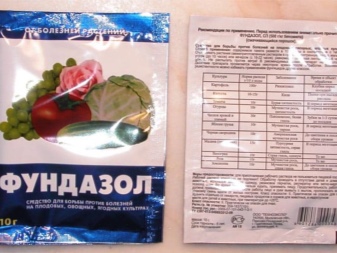
Possible problems
Changes for the worse regarding the external attractiveness of an aster can occur if a flowering bush has been growing in one place for more than 5 years. After this time, degeneration processes are activated in the plant. To avoid such situations, it is recommended to transplant the aster in the garden every 5 years. During this period, it will be more correct to divide the bush into several plants.
There may also be problems with seedlings, for example, if the planted material does not germinate. To grow a beautiful flower in your front garden, it is recommended to root the seeds only in fertile soil or using complex fertilizers.
The gardener may have crop problems when planting asters after nightshades, tulips or carnations. In particular, this applies to fusarium. Organic fertilizers, for example, fresh manure, can also worsen the condition of asters.


Use in landscape design
Aster is very often used in group plantings, when creating blooming compositions on the site. The flower bed will become a real decoration in the garden when you combine asters with bright marigolds or zinnia.
It will be possible to create a beautiful composition with flowers by planting multi-colored crops together, creating a picturesque picture of a living and bright blooming carpet.

Asters are combined with many garden crops for compositional planting, but the culture will look no less attractive in mobile flowerpots or pots for a single planting. The variety of colors will help to create a real decoration of landscape design from an aster.

You can see everything about the annual aster in the video below.






































































































The comment was sent successfully.